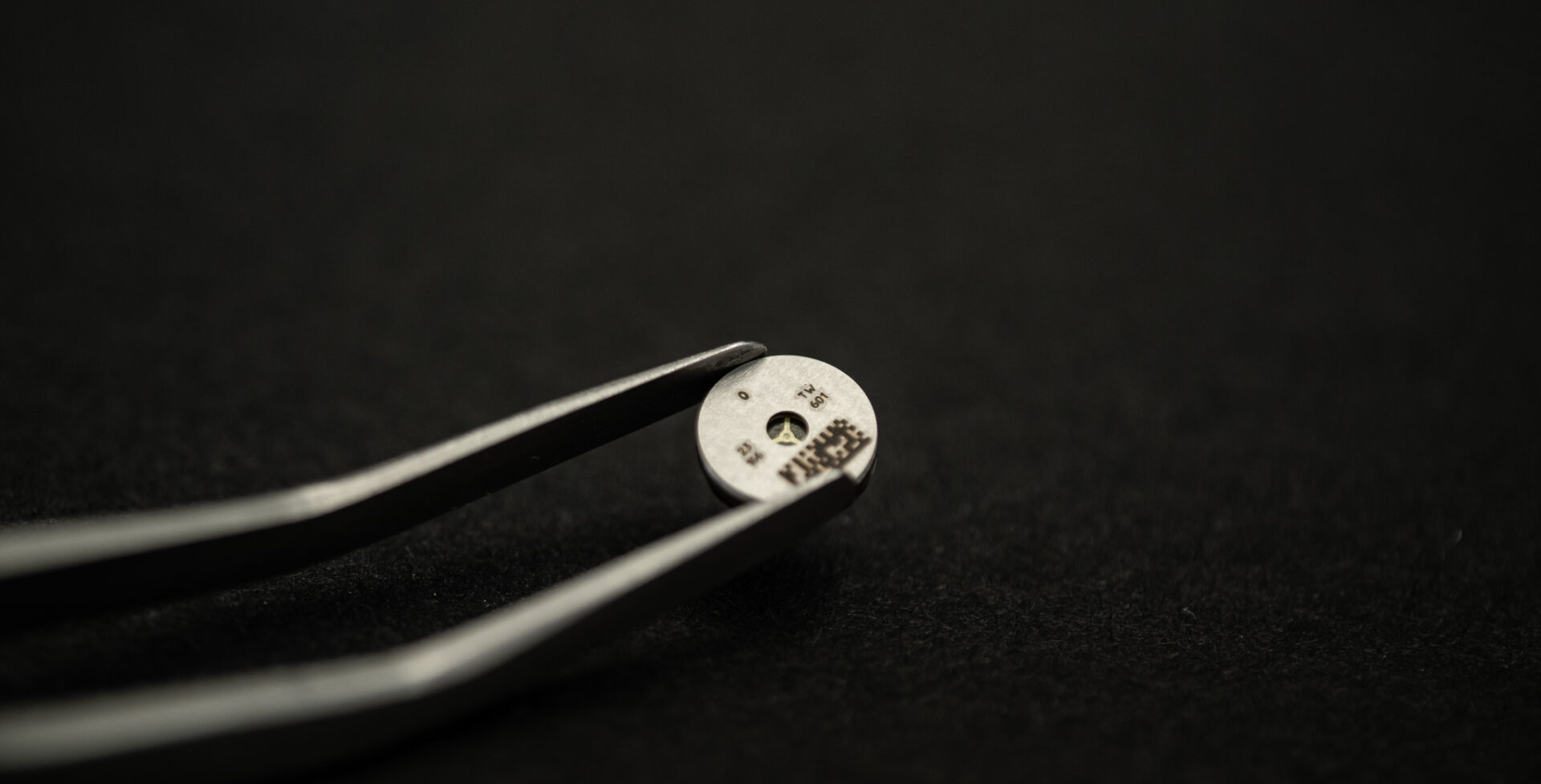
Published:
The Ideal MEMS Speaker for Your TWS and OTC Hearing Aids: Conamara
With the recent growth in market demand for true wireless systems (TWS) and over-the-counter (OTC) hearing aids, the hunt for the perfect fit for speakers and electronics has started. USound has been ahead of time, with the launch of Conamara: a family of MEMS speakers specifically designed for these two highly demanded audio devices. They are available either as full-range speakers, for all-inclusive miniature audio applications or as a tweeter, following the increasing market demand for high-performing two-way systems. Thanks to USound’s patented technology, the MEMS-speakers from the Conamara series are significantly thinner than comparable conventional speakers.
The thinnest high-performing micro-speakers on the market
Conamara MEMS speakers are characterized by a round form factor (available in 5 mm or 6 mm diameter versions) and an extremely low thickness (1.5mm). Their slim silhouette enables miniaturization and modularization, saving space for other sensors and components and allowing maximum flexibility for your industrial design.
Conamara speakers outperform traditional Electrodynamic (ED) and Balanced Armature (BA) speakers with higher SPL at a smaller volume, weight, and thickness.
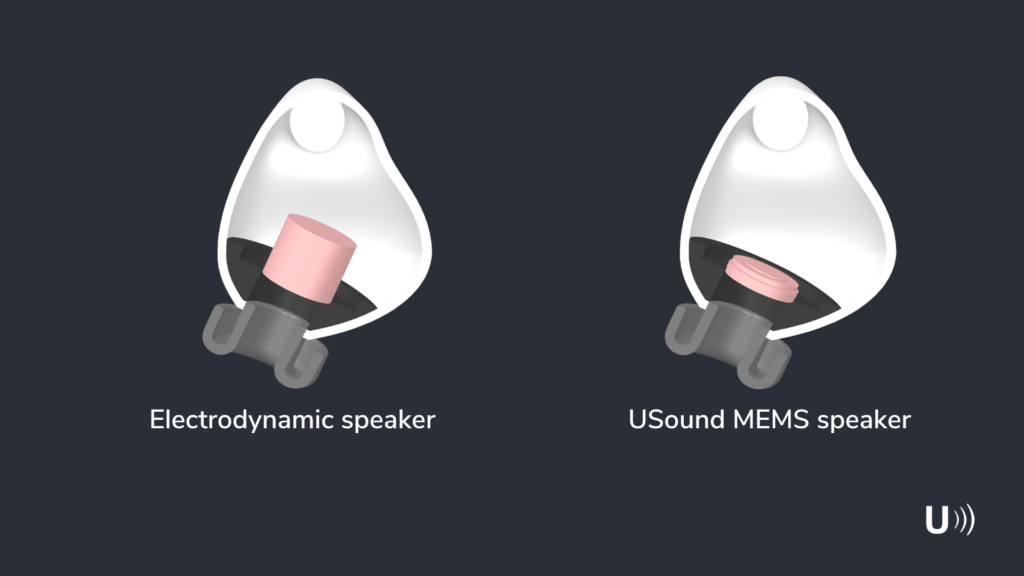
Compared to traditional voice coil-based speakers, MEMS speakers are significantly smaller, allowing for up to 75% reduction in volume. This directly translates into additional available space for other components which can be integrated in the same product case, such as accelerometers (headtracking), pulse oximeter (health sensors), microphones (ANC, beamforming, etc.), UHF sensors (“find my device”), infrared-sensors (ear detection, proximity sensor). A thinner profile also means a larger battery, e.g. prolonged usage.
Furthermore, they also offer a very competitive power consumption, up to 50% less than ED loudspeakers. Conamara speakers combined with Tarvos 1.0 amplifier consume only 0.8 mA during quiescent operation and 0.9 mA at medium-loud sound levels (94 dB music reproduction), exceeding market demand.
While ED speakers are typically not suitable for wet environments, Conamara speakers are IPx8 water-resistant, which means that they are able to withstand an immersion depth up to 3 meters for 30 minutes. Thanks to this feature, Conamara-based products can be used when it is raining, while doing sports or when submersed under water.
Conamara MEMS speakers are compatible with surface mount technology (SMT) reflow soldering: this allows for a fully automated pick-and-place assembly process that enables high reproducibility at up to 50% lower assembly and production costs. The reflow capability of MEMS speakers also allows for easy integration into existing SMT lines. In contrast, magnet-based speakers cannot be reflow-soldered, as their magnets typically lose their magnetization properties above 100°C, while Conamara speakers can withstand reflow soldering with a peak of 200°C. This means that earphones including traditional voice coil-based speakers need to be assembled, at least partially, by hand.
Finally, since USound MEMS speakers are PCB-based, they can easily be combined with additional SMT components or circuits, such as ASICs, to create a so-called “audio module”. Kore 4.0 UMC-P04C06012F is a perfect example of this, integrating on a single module one Conamara speaker, the ASIC amplifier Tarvos 1.0 UC-P3010, and all the corresponding electronic components.
An outstanding audio performance
In terms of sound pressure level (SPL), the Conamara full-range speaker provides an outstanding performance (> 110 dB) from 20 to 12 kHz, with a quasi-flat response without unwanted dips or notches or extreme peaks, making it a perfect fit for typical TWS target curves.
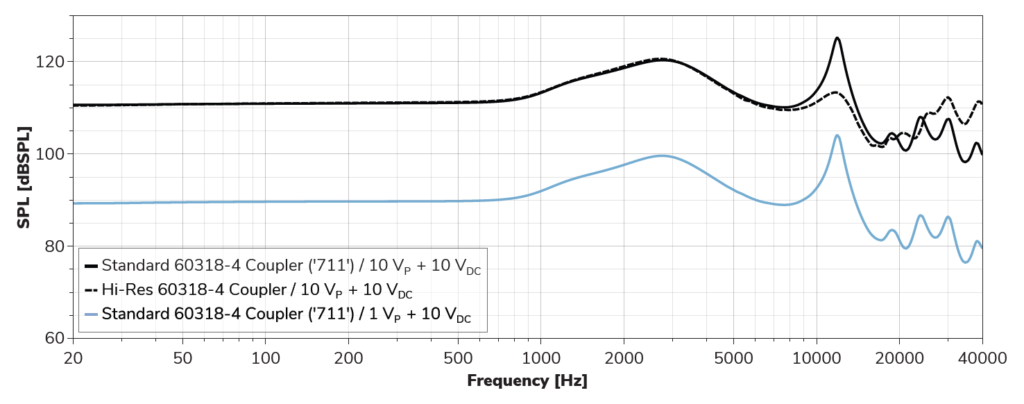
If 2-way systems are required, the Conamara tweeter represents the ideal choice, surpassing the competition by more than 10 dB SPL in the range of 4 kHz and above.
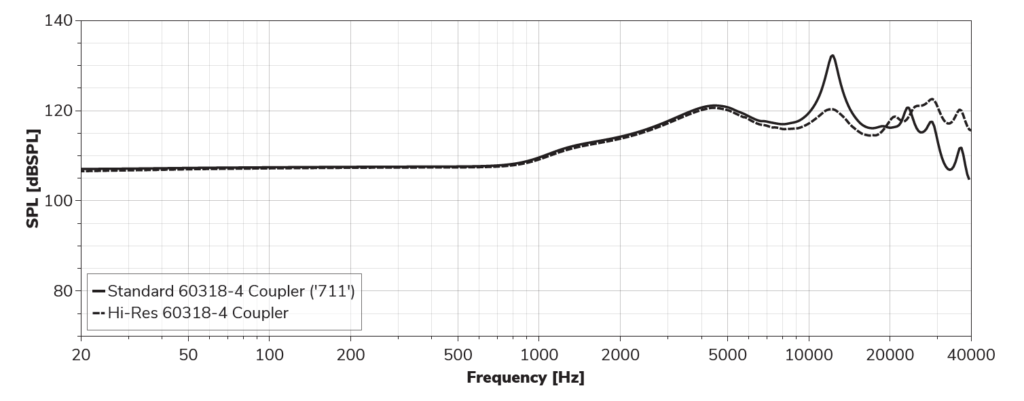
Conamara MEMS speakers’ extended bandwidth up to 40 kHz enables High Resolution (Hi-Res) and ultrasonic applications. Furthermore, thanks to their advanced technology, they produce a crisp and vivid soundscape, offering high sound accuracy. Conamara’s performance also shines when it comes to audio distortion: the total harmonic distortion (THD) stays below 0.2% in the frequency range up to 5 kHz, without any undesired peaks.
If an even lower distortion is required, USound has developed a proprietary algorithm, called ALA (Active Linearization Algorithm) which further improves the performance of USound MEMS speakers by reducing their THD across the whole frequency range. This algorithm can be implemented in most commercially available digital signal processors (DSP) and consists of a set of C-functions. The amount by which ALA can reduce THD varies from speaker to speaker: as an example, the plot below shows the THD level measured on USound’s Conamara 6mm Tweeter, with and without ALA:

Ideal for TWS and OTC applications
Conamara speakers fits typical earphone shells better than its competitors: thanks to the low thickness, a single full-range speaker can be integrated into miniature earbuds while, thanks to the two-way-system, it enables an easy combination of a tweeter and a woofer in the same casing. Its round form factor is also advantageous, as circular speakers represent a better fit for the industrial design of a TWS.
When compared against balanced armature (BA) speakers, Conamara speakers exhibit an important advantage: BA’s design typically features a rectangular shape with an output tube, which causes unwanted resonances. On the contrary, Conamara speakers can be directly integrated in the outlet of the earphone, allowing for an optimal audio response without additional resonances.
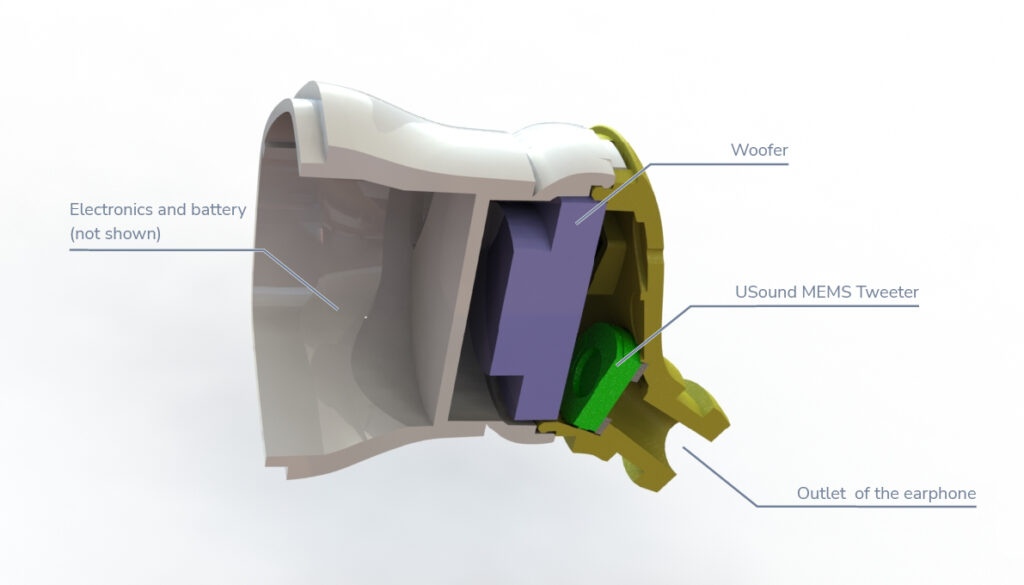
Smart hearing aids are now becoming the most popular solution for low-to-mild hearing loss due to additional functionalities they offer to the user with respect to the traditional hearing aids. The ultra-thin form factor of the Conamara series enables combining the OTC design with biosensors, which offer advanced health monitoring functionalities, higher capacity batteries (longer life), while enabling advanced ergonomics for extra comfort and discretion. Thanks to their wide frequency bandwidth, the Conamara speakers provide a natural and clear sound in hearing aids.
Conclusion
In summary, the Conamara speakers’ series provides some very relevant advantages that will help audio companies develop new TWS earphones and OTC hearing aids that bring the best overall quality to their end customers. USound speakers do not only guarantee flawless audio output, but also holistically improve the end-product by reducing power and space consumption.

About the Author
Andrea Greco is a Field Application Engineer at USound. He has international experience as an Acoustics Engineer, with a background in both acoustics and music. LinkedIn

